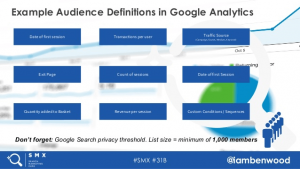There has never been a time in history when sales and marketing were so data-driven. While in the past salesmen used to show off their Rolodex as a visual representation of the relationships they had built, sales teams are now looking outside their own networks to get the best prospect data. Of course, not all prospect data is good. In a recent Demand Metric study, it was reported that only 40% of B2B organizations have highly accurate data. Therefore, there are two different kinds of sales teams.
The first kind of sales team puts a great deal of time and effort into the gathering, researching, and correcting of their prospect data. The second kind treats data as an afterthought. They tend to work with outdated or incomplete prospect data. I don’t have to tell you that the first kind of sales team will outperform the second kind in almost every situation, purely because of their data policies.
You wouldn’t be an effective salesperson if you didn’t want to outperform your competition so the issue of data is probably leaving you with a couple of big questions:
Why is it so crucial to have accurate prospect data and what aspects of your sales process will it affect?
In sales, you need to be able to identify your potential buyers with accuracy so that you will be able to contact them in an efficient way. For that reason, accurate prospect data is essential to getting the best results from your outbound campaign. Unfortunately, not all data providers are created equal. Some less scrupulous actors will sell prospect data that is 6 months old, a year old, or even older. So why is that a problem?
Think about your office. Even in those that have low turnovers, you will still see a number of people coming in and out of the company over the year. And of course, high turnover offices will see waves of people regularly changing their jobs. According to the Bureau of Labor Statistics, the average American will have 12 jobs throughout their career with most working at the same place for less than 5 years.
What these statistics mean is that your average company will potentially have a much different lineup each year. Because of these circumstances, older data is usually at best 70% accurate. There are a few ways in which you will run into problems if 30% of your prospect data is bad.
The most immediate and obvious implication of poor data is that you are not getting 100% of the prospect data that you paid for. Imagine you bought a sandwich at a deli and when it was handed to you, you found that somebody had bitten off a third of your sandwich. While the thought of that would put off most sandwich buyers, the other implications of bad prospect data would put off any sales person.

You waste time working on bad data
After most sales teams receive their prospect data they work to enrich it. It can mean researching the prospects and their companies or crafting personalized messages to each prospect. Now imagine you did this for a week on data which was 70% accurate. It would mean that the work you did on Thursday afternoon and all day Friday would be unnecessary and pointless.
And you wouldn’t be alone. IBM estimates that bad data costs the US economy 3.1 trillion dollars every year from the time wasted dealing with it. In other words, bad data is a big expensive waste of time.
Bad prospect data will lead to high bounce rates
Your bounce rate is the number of times your emails get sent back to you by your prospects’ email servers. One of the most common reasons that this can happen is if you send a message to an email address that no longer exists. If it happens enough times, your email domain reputation could be hurt causing your domain to be blacklisted and blocked by spam filters. This takes a while to resolve and would shut down your outbound campaign if it happened.
Your team is not able to tailor their pitch accurately
Let’s say your product solves one problem for a customer with a ten person team and another problem for a customer with a twenty person team. In order to pitch your prospect accurately, you need to know the exact number of employees they have now, not eight months ago.
Inaccurate prospect data can make you look foolish in the eyes of your prospect
When you personalize your message to your prospect, you try to include information that is relevant to the prospect. This can include using the prospect’s current position in the company or their superior’s name (e.g. “From one Head of Lead Generation to another…” or “I sent a message to your boss John Park…”).
Your prospect would be reluctant to have anything to do with you if he got promoted to VP of Sales 7 months ago and you used his old position in your message.
When you buy bad prospect data, you lose twice
Not only does bad prospect data mean that you get a lot less than you pay for, it also harms the performance of your team. So how can you avoid falling into the trap of buying bad data?
You can collect the data yourself
On the one hand, you know what you are getting and you get the satisfaction of having done an honest day’s work. On the other hand, collecting data yourself is incredibly tedious and slow. Back when we were doing manual prospecting at Growbots, it used to take us a whole day just to get prospect data for 100 prospects.

Outsource prospect data collection to an offshore team
Outsourced teams can provide you with reasonably good data. Unfortunately, they are not very flexible when it comes to targeting. Additionally, they tend to be much more expensive than a data provider and take a few weeks to deliver.
Find a reliable prospect data provider
A reliable prospect data provider is like a Japanese car: it always works. What is important, you don’t waste any time enriching or verifying bad data and you don’t cause any harm to your domain or message’s reputation. Access to complete and up-to-date data is the only way to make your sales team perform their best.
Don’t know what to look for in a data-provider? Want to know how to check whether the data is top-notch? Stay tuned for our next article on this subject!
Business & Finance Articles on Business 2 Community(85)








